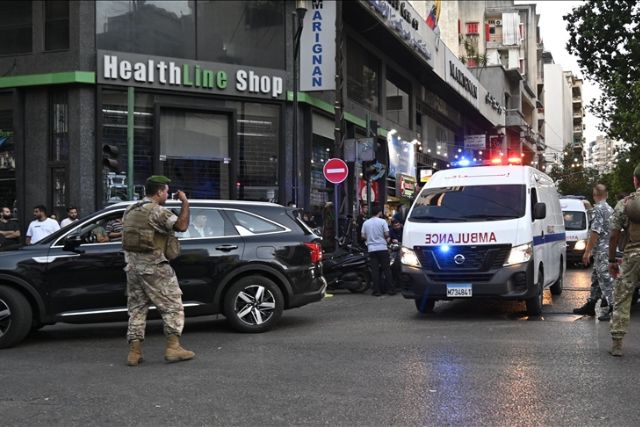Scientists locate area of Battle of Mohacs in Hungary
Battle took place in 1526 between Ottoman army under command of Suleyman the Magnificent and Hungarian army led by King Louis II

BUDAPEST, Hungary
Hungarian scientists located the area of the Battle of Mohacs, considered one of the most important victories of the Ottoman Empire in Europe as it resulted in Hungary falling under Ottoman domination.
The Battle of Mohacs took place on Aug. 29, 1526, between the Ottoman army under the command of Sultan Suleyman the Magnificent and the Hungarian army led by King Louis II.
Norbert Pap, a Hungarian geographer-historian and the head of a project initiated by the Social Sciences Research Center of Hungary's University of Pecs, told Anadolu Agency about his findings.
The Battle of Mohacs had great importance in the history of Hungary, Pap noted, saying the Hungarians that lived in the Carpathian Basin for about a thousand years, had a strong, sovereign, and independent kingdom before the battle.
Pap said the conflicts between the Ottoman Empire and the Hungarian Kingdom started in the Balkans under the rule of Hungarian King Sigismund at the end of the 14th century, and there was a period of war for about 300 years.
The Hungarian-Turkish common history covers six centuries, with half of it peaceful and the other half comprising conflicts, Pap said, adding that some major conflicts such as the Nicopolis (Nigbolu) and Varna battles took place during the first 300 years.
Controversy lasted around a century
Pap also pointed out that there is no discussion that the Battle of Mohacs took place in a region close to the joint border of Hungary with Serbia and Croatia today, while there is still debate on the exact location of the battle.
“The Battle of Mohacs took place somewhere south of the city of Mohac in present-day Hungary, but there was a century-long historical debate in Hungary about its exact location,” he added.
Pap added that according to the notes of Pastor Istvan Brodaric, who was in the Christian army during the war, the janissaries -- the most important division of the Ottoman army -- were located in front of a village called Foldvar, and that 150 cannons owned by the Ottoman army were lined up there.
Citing Brodaric's notes, Pap said the residents returned to the village after the war, and according to the sources, it was determined that the village was inhabited until 1703.
“It was thought that the war was fought in the Satorhely region of the city of Mohacs, but the investigations revealed that this place was created in the 1700s,” he said.
“The Foldvar region, where the battle took place, was unknown to anyone until today. That's why, in the last 100 years, 16 theories have been put forward about the battlefield being in the east, west of the city of Mohacs, and even in a part of Croatia,” he added.
Village of Foldvar
Pap noted that according to the results of their research, the village of Foldvar is near the Borza-Major area, and the geophysical investigations they carried out showed the traces of a large medieval settlement in the region.
“The discovery of the village of Foldvar is a serious event. Archaeological excavations are required in the area. We even found a map pointing to the location of this village,” he said.
This manuscript map is available in the Hungarian National Szechenyi Library. We know with certainty that this village was not destroyed in 1526, but survived until 1703,” he added.
“Those who fled the village before the war later returned. In Turkish sources, there is also information that this village paid taxes.
"The village was destroyed, probably due to the war between Serbs and Hungarians, like some other villages in the area,” he explained.
The area on the banks of the Danube is a vast arable land today, but it was a swamp completely covered with water at the time of the war, Pap said, noting that both the Turkish and Hungarian armies were able to reach the region by crossing the swamps.
That location was the only suitable area for the war to be waged in the village, he added.





